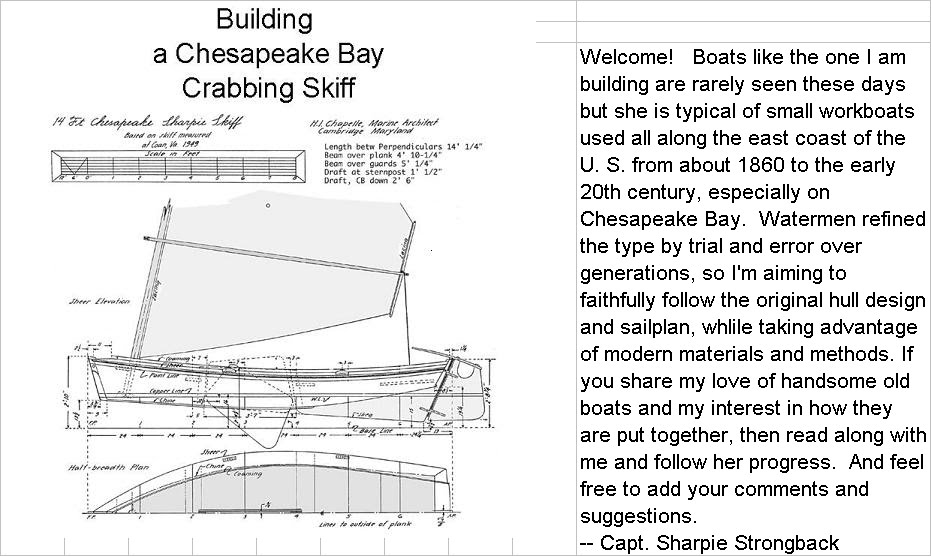Starting several days ago, I planned to devote one day to sealing many parts with epoxy, and today was the day.
For a long time in the '70's I was a faithful reader of National Fisherman magazine, not because of any interest in commercial fishing, but because at that time the magazine often ran articles about wooden boat design and construction. When it eventually dropped that coverage, I seem to recall that Woodenboat magazine was the heir. Anyway, I remember reading of two brothers named Gougeon in Michigan pioneering the use of epoxy adhesives in boatbuilding. They called their system "wood epoxy saturated technique", later to become a brand name acronym WEST System epoxies. What stuck in my mind was their assertion that if you encapsulate wood in epoxy, it will last virtually forever. I don't know if that claim is true, but I do know it motivates me to seal every wood part of this boat in epoxy before painting in the hope that she will last, certainly not forever, but at least as long as I do.
So today I mixed up batches of 1:1 epoxy specially-formulated to penetrate and seal wood. I sealed the thwarts, the underside of the deck, the mast step, the top side of the sternsheets, the tabs at the top of the rudder, all the deck-coaming support blocks, the ends of the mast, and the forward-most frames which I'd trimmed to fit the coaming. I also sealed the top and bottom edges of the coaming. That type of epoxy is slow to cure, and as I write I'm hoping it hardens in time for me to put all those pieces under cover befor the forecast rain arrives tonight. If they are at least halfway hardened, rain will not hurt them, but may cause a "blush" to form on the surface which will need to be washed off.
I'm having second thoughts about the belaying pins I put in yesterday. The pins are fine, but the location is necessarily cramped. There may not be enough room between the pins and the mast to easily cleat the halyard and snotter. I may end up knocking the pins out, plugging the holes, and putting cleats or belaying pins on the frame just aft of and below the mast thwart, where there is more room.
Tuesday, November 30, 2010
Subscribe to:
Post Comments (Atom)

No comments:
Post a Comment